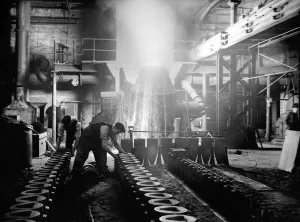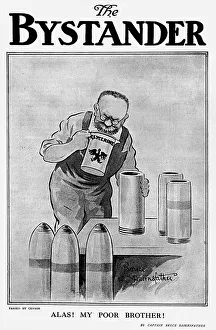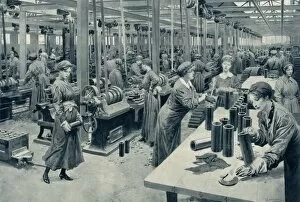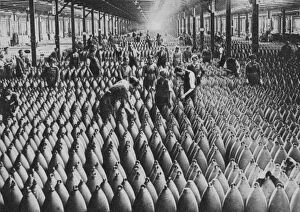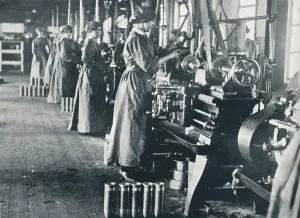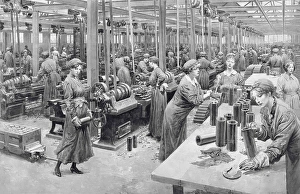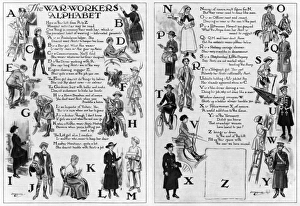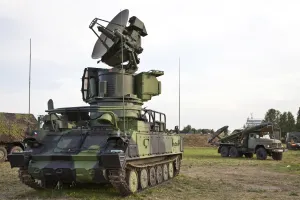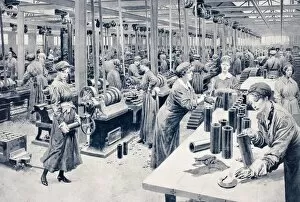Munitions Collection (page 9)
"Munitions: Unveiling the Hidden Heroes of War" A glimpse into history: A German propaganda poster from WW1 showcases the power in shaping the outcome of battles
All Professionally Made to Order for Quick Shipping
"Munitions: Unveiling the Hidden Heroes of War" A glimpse into history: A German propaganda poster from WW1 showcases the power in shaping the outcome of battles. Breaking barriers: In 1917, a women's war workers football match in London defied gender norms, highlighting their crucial role in munitions production during WW1. Honoring dedication: David Lloyd George's visit to Newport during WW1 acknowledges the immense contribution of munition workers towards victory on the frontlines. Mobilizing strength: The iconic "Women of Britain" World War Two poster encourages women to join the workforce and support munitions production for national defense. Capturing resilience: Fortunio Matania's artwork immortalizes female munition workers, showcasing their determination and sacrifice during times of conflict. Advancing firepower: Witness the formidable Brimstone air-to-ground missile mounted on a triple launcher, exemplifying technological advancements in modern-day munitions. Engineering excellence: Swindon Works' 8in howitzer gun carriage on an Open B wagon stands as a testament to British craftsmanship during WW1. Recognizing valor: Women receive well-deserved honors for their unwavering commitment as they stepped up to fill vital roles within the munitions industry during WW1. Fueling victory responsibly: A poignant WWII poster reminds citizens not to waste precious resources with its clever slogan - "Don't be fuel-ish. " Empowering women through work: Known as "Lloyd George's Munition Girls, " these brave individuals played an instrumental role in supporting Britain's war efforts during WW1. Noble service by Lady Constance Stewart-Richardson shines light upon influential figures who championed women's involvement in wartime industries during WW1. Sterling Ladies rise above adversity as they form a remarkable all-female football team amidst the chaos of WW1, showcasing their resilience and unity in munitions factories.

